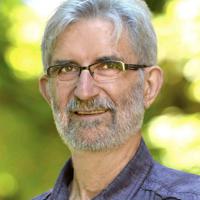
On the evening teachers wrapped up their vote to return to school, BCTV legislative reporter Keith Baldrey surmised that they had succeeded in putting class size on the public agenda. Thanks to teachers' efforts, the Campbell government will need to address this issue seriously in the months ahead because the public will be watching, Baldrey predicted.
And a day earlier, Vancouver Sun columnist Paul Willcocks offered a similar analysis. Government has a right, "to set educational priorities, including how big classes can be," he wrote. But teachers too have a right, "to bargain working conditions, including how big classes can be. The challenge," he concluded, "is balancing these rights."
Like Baldrey and Willcocks, some CanWest commentators provided balanced and fair observations during the two-week long teacher-government stand-off.
And some CanWest reporters provided a sympathetic account of the teachers' issues. BCTV's Brian Coxford travelled to Victoria with teachers for the mass rally at the legislature. He told the story of the special-ed teacher from Dawson Creek who teaches a class of 34, including seven special needs students. The teacher herself has special needs.
How much support?
Many reporters are parents of school-aged kids and must sympathize with the teachers' cause.
But they were at odds with the CanWest agenda, the framing of the dispute CanWest's senior managers and editors attempted to convey to their readers and viewers.
CanWest seems troubled by the power of unions and usually goes to great lengths to undermine their credibility. Its past record shows hostility to the public education system and support for private schools. And, of course, it is a staunch supporter of the Gordon Campbell government. These three frames were also applied during the dispute.
In the political economy of communication, the influence of owners and editors in shaping the news is considered to trump the influence of individual newsworkers. In light of the many positive stories during the teachers' dispute, that assessment may need to be reconsidered.
The organizational agenda could be seen in the framing Tony Parsons applied to his stories. On Day 3 he announced that teachers' solidarity was beginning to crumble as teachers started crossing the picket lines. However, Keith Baldrey had to correct him by saying that only a few teachers in small pockets around the province were crossing. Between 98 and 99 percent were still walking the line, he said.
The agenda could be seen in news items fabricated from nothing. In one shabby piece of journalism, BCTV reporter Michelle Miller on October 14 told viewers that, "recent opinion polls show parents support teachers in this dispute." She then asked, "How are parents feeling right now as the strike drags on?"
The answer Miller offered was not based on the results of a more recent, scientifically-conducted public-opinion survey. Instead, she informed viewers that, "we've been getting emails from around the province saying that teachers need to stop holding children hostage."
OK. How many emails? How many emails support teachers? No evidence was presented.
Caricaturing Sims
Miller continued her sham news story with the claim that, "people we've stopped on the street feel the same way." Three person-on-the-street sound bites followed: two were against the teachers, one was fifty-fifty. How were these three people chosen? How many interviews did she discard before finding three that fit the corporate frame?
The agenda could be seen in the works of some columnists, such as the Province's Michael Smyth. According to Smyth, BCTF president Jinny Sims fumes, displays predictable moral outrage, suffers variously from illusions [sic] of grandeur or delusions of grandeur and revels in her martyr complex.
She's the oh-so-oppressed sacrificial lamb of the teachers' crusade, who doesn't know how to compromise. She seems to actually want to go to jail, he surmised.
Sims's opponent during the teachers' dispute was Labour Minister Mike de Jong. According to Smyth, de Jong was, well, nothing. Smyth hurls no epithets at de Jong, who doesn't fume, display moral rage or display anything. In fact, he does not appear in Smyth's columns about the teachers' dispute, which is odd given that he played as prominent a role as Sims.
How many picketing?
By presenting Labour Minister de Jong as the teachers' opponent rather than Education Minister Shirley Bond, the Campbell government succeeded in portraying the dispute as a labour issue and not an education issue. CanWest largely allowed the government to get away with this framing.
The news organization made a special point in print and on-air about the 65,000 students at independent schools and 3,000 students being home-schooled who were continuing with their studies. There were few unions to worry about in the independent school sector.
When a large group of students mounted a show of support for teachers, the spokesperson got an 11-second sound bite. But when a small group tried to cross the picket line, its members spoke for 52 seconds. For two evenings, BCTV focussed on the fact that 42 percent of teachers did not vote to continue the strike after it was declared illegal by the BC Supreme Court. The station gave viewers the numbers several times, in case they were slow learners. BCTV reporter Brian Coxford wagged his finger at Sims. Tsk, tsk, Jinny, we were led to believe that voter turnout was 80 percent on the second vote.
What the news organization neglected to report was that teachers were given very short notice, could not vote by proxy and were provided only a two-hour voting window. Even so, over 50 percent of teachers voted and 90 percent of those voted to continue the strike. BCTV implied that the 42 percent who didn't vote were opposed.
CanWest concluded that many teachers must be crossing the picket lines and sent out its legions of reporters to find them.
Unlike the quest in Lord of the Rings, CanWest was largely unsuccessful in finding these teachers. But where it did find them - one out of 100 staff at Centennial School in Coquitlam, six out of 90 at Gleneagle Secondary also in Coquitlam - it made maximum mileage by giving them an unopposed microphone.
Running down public education
So what is CanWest's educational agenda? The day the teachers were voting to return to their classrooms, the Province editorialized that their, "open defiance of the courts has caused major harm to the credibility of the public school system and its ability to educate our children in a fair, balanced and non-partisan manner."
But the Province itself has done much to cause major harm to the credibility of the public school system. In the past seven years, the paper has turned over hundreds of pages to the Fraser Institute for its dubious school rankings.
The purpose of the rankings is to undermine the credibility of the public system by demonstrating over and over that private schools score better than public schools on the Fraser's limited measures.
Ranking individual schools turns school against school and opens the door to vouchers so that children can attend "better" schools, which most often will be private. Ultimately, this strategy will strangle the public system, an outcome evidently desired by the libertarians at the institute.
As for where CanWest sits, the day after the teachers walked out, an ad appeared in the Globe and Mail for "Our Kids Private Education School Fairs." The ad informed us that private schools will present their marketing pitches at fairs to be held in Toronto, Oakville and Vancouver (November 19 at the Convention Centre).
Sponsors for the fairs include Global TV and the Vancouver Sun. The Province was a sponsor last year.
Where class size matters
Schools that participate in the fairs vary in size and scope. Some are small, some are as large as public schools, some are private for-profits and many are religion-based. But they have one thing in common, a, "focus on limiting class sizes," as the school fairs website points out.
In the world of private schooling, class size does matter. Bodwell High School in North Vancouver is one of the private schools that will be at the Vancouver fair. It has an average class size of 18. Collingwood School in West Vancouver (the wealthiest postal code in the country) boasts an average class size of 20 to 22. At Southpointe Academy in Delta, the average class size is 18.
Contrast these numbers with the Gordon Campbell-imposed limits for public schools. The BC School Act requires that school districts not exceed an average of 30 students per class on grades 4 to 12. This supposedly provides flexibility in allowing schools to offer classes to smaller groups of students because elsewhere in the district, science, English and social studies classes are crammed with more than 30 students.
BCTF wants to return to the situation in 2002 when contracts included caps on class size and limits on the number of special needs students in any one class.
Pete McMartin wrote a column in which he tried to discover, unsuccessfully it seems, how class size is determined. And the phrase "class size" was mentioned in over 60 articles during the two-week period, including the commentaries by Keith Baldrey and Paul Willcocks. But the issue itself remained unexamined.
CanWest's lack of interest in class size in the public system is not new. A week before last May's provincial election, a Sun editorial claimed no evidence had been found linking class size and student performance. But as BCTF researcher Charles Naylor pointed out in a recent Tyee article, the Sun relied on a single source for this conclusion, Stanford University professor Eric Hanushek. Naylor pointed to the multitude of evidence countering Hanushek's claims, evidence that class size does affect performance, which was ignored by the Sun.
Eric Hanushek is a senior fellow at the Hoover Institution on Stanford's campus, a prominent neo-conservative think tank that receives millions of dollars in corporate and foundation funding to attack social welfare policies such as public education. Hoover personnel were key advisers to George W. Bush in his two presidential election campaigns. Secretary of State Condoleezza Rice is an ex-Hoover fellow.
Hanushek is a favourite of Sun editorial page editor Fazil Mihlar, who has written several approving columns on Hanushek's controversial work.
Meanwhile, in September, with little fanfare or consultation with the education community, the Campbell government increased funding for special needs students in private schools from 50 to 100 percent. It's the foot in the door to increased funding for other private school programs.
Donald Gutstein, a senior lecturer in the School of Communication at Simon Fraser University, writes a regular media column for The Tyee. ![]()















Tyee Commenting Guidelines
Comments that violate guidelines risk being deleted, and violations may result in a temporary or permanent user ban. Maintain the spirit of good conversation to stay in the discussion.
*Please note The Tyee is not a forum for spreading misinformation about COVID-19, denying its existence or minimizing its risk to public health.
Do:
Do not: